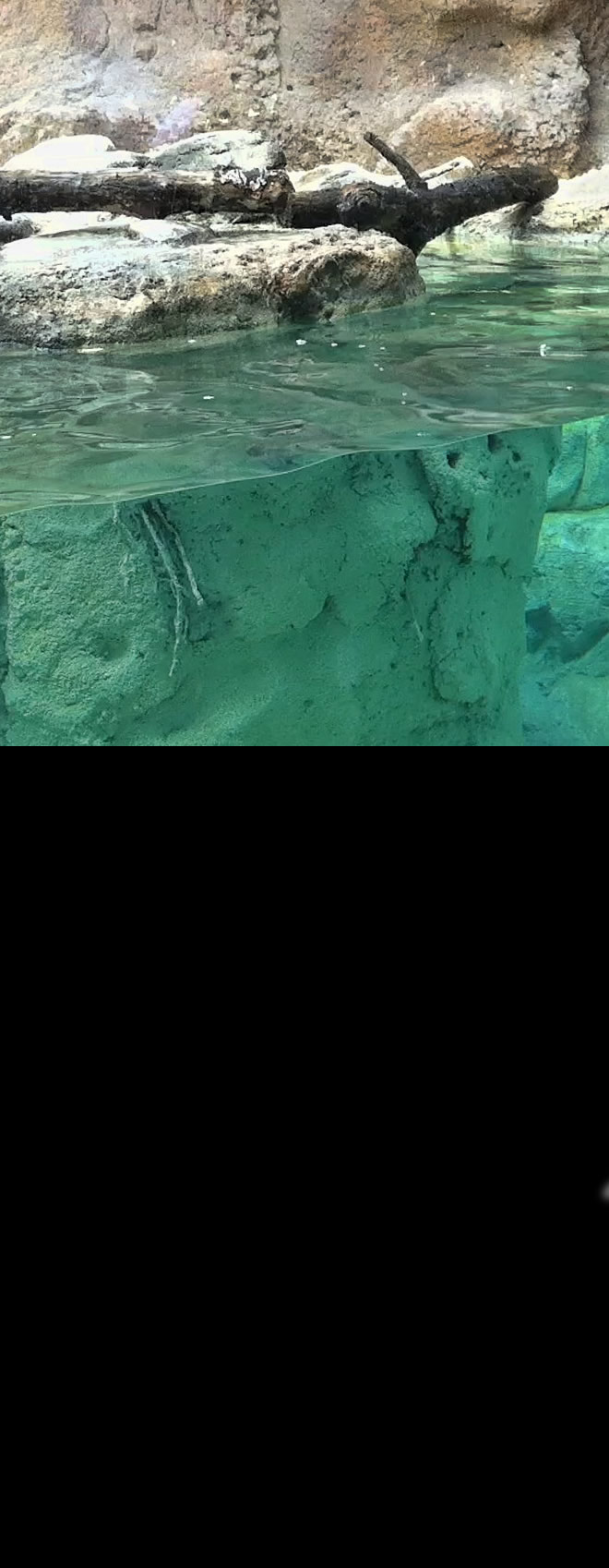Why is the otter split? Light rays from it crossing the water/glass/air interface are sharply refracted, deviated in direction. Light from its body in the air is not deviated. It is a more interesting variant of the standard ‘straw in a glass of water’ demo of physics textbooks.
A deeper question is why is light refracted? The key is that the speed of light is not constant, it slows significantly in dense media like water and glass. In ultra-dense diamond it crawls at a mere 77,000 miles per second, only 41% of its vacuum velocity. A light wave entering a dense medium interacts with its atoms. When the wave reaches an atom it is absorbed and induces small oscillations in the atom’s electron cloud. For non-resonant scattering the result is that the atom then re-emits light at the exact same frequency which then proceeds as an outward wave at vacuum velocity. This radiation then interacts with another atom and so on… The small delays in re-radiation at each atom collectively appear as an overall reduction in the light’s velocity.
The speed reduction produces the refraction. At right, plane waves enter water from air. The six highlighted wave crests travel the distance AB in air. The same six crests in the water travel a shorter distance CD. The wave’s direction of travel is altered. See an animation - try it for diamond's refractive index of 2.42.
The speed reduction is frequency dependent and blue is refracted more strongly than red in most media.
The waves are closer together in water but the frequency is unchanged. As the perceived colour remains the same our eyes must respond to frequency rather than wavelength.
The changing light speed explanation is inadequate. One could invoke quantum theory of radiation, or phenomenologically a change in electric permittivity in Maxwell’s equations or, more abstractly, Fermat’s Principle of least time. Whatever, the why and how of everyday refraction and reflection are in some ways much less easily graspable than less well known diffraction. But ask a scientist ‘why’ of almost any topic more than three times in succession and they will be brought to their knees at the raw edge of knowledge!
|








